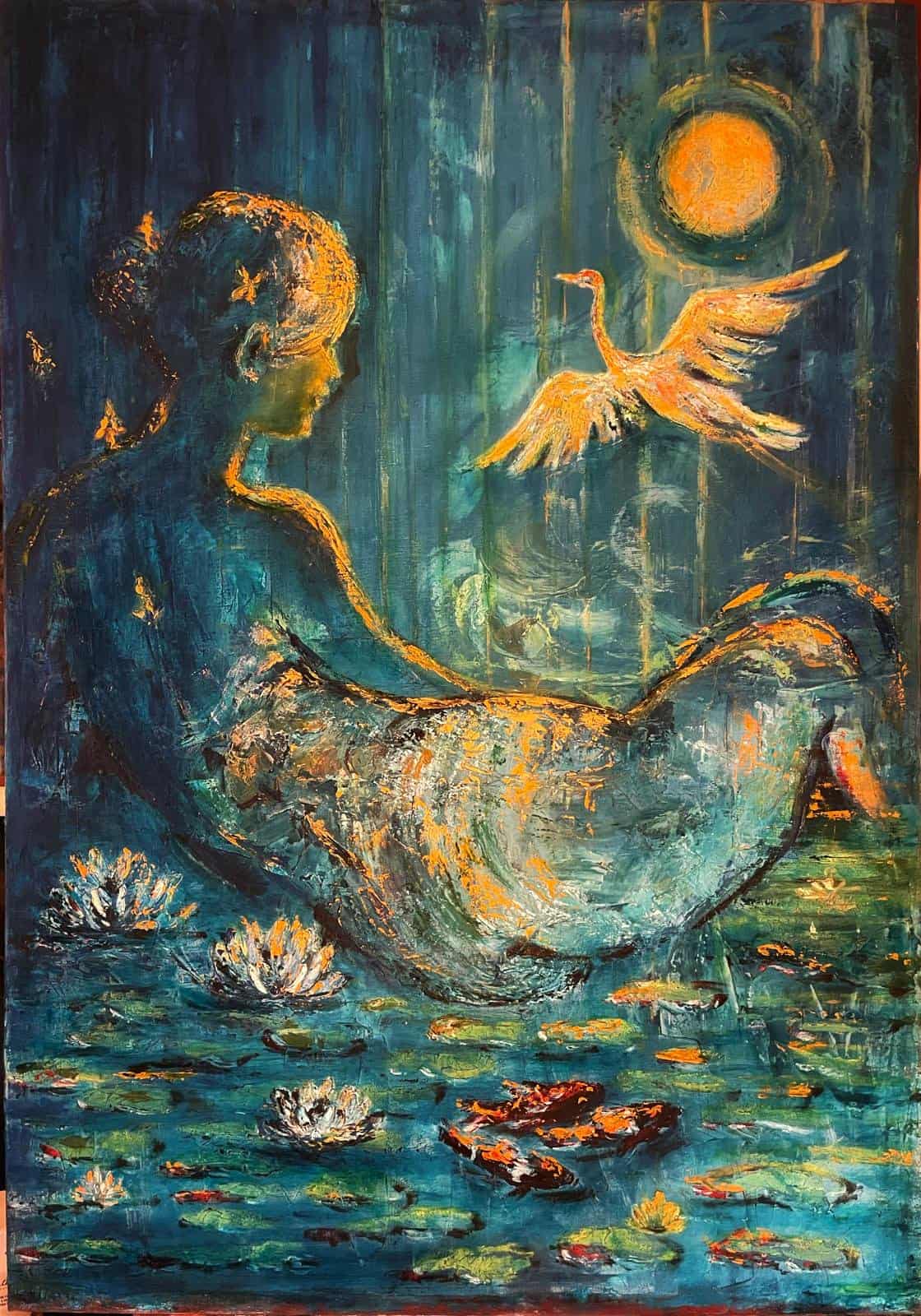Paola Carosiello - Tra realismo e sogno: lo sguardo che forgia l'identità
di Francesca Callipari
Artista bolognese, dopo aver frequentato un corso di pittura nella sua città, si iscrive all'Accademia di Belle Arti di Bologna, laureandosi con una tesi sul paesaggio e sull'evoluzione dell'arte nel verde urbano. Adottando anche stili leggermente diversi, nelle sue opere Carosiello si concentra intensamente sulla descrizione puntuale dei sentimenti e degli stati d'animo, rimarcando spesso la fragilità umana e le sue angosce, ma allo stesso tempo anche la capacità di rialzarsi e di reagire.

Paola Carosiello si inscrive nel solco di quegli artisti la cui opera si pone al di là della mera rappresentazione, per concentrarsi sulla decifrazione dell'universo emotivo dei soggetti. La sua è una cifra stilistica di raffinata complessità, frutto di una sintesi equilibrata tra verosimile ed evocativo. Si tratta di un approccio che si articola su due piani: da un lato, attraverso un realismo attento e scrupoloso nella resa fisiognomica dei personaggi; dall'altro, dalla presenza di ambientazioni sospese e oniriche, dove gli spazi si fanno liquidi, vibranti e indeterminati, spesso inondati da una luce quasi eterea.
In tale contesto, gli occhi assumono, certamente, un ruolo centrale, divenendo fulcro focale e psicologico di molte sue tele. Fissando l'attenzione dello spettatore, essi rafforzano l'idea che l'artista persegua non soltanto la somiglianza dei personaggi ritratti, ma soprattutto la rivelazione dell'interiorità più profonda, facendo leva proprio sulla potenza dello sguardo.
Immergendo l'osservatore in un scenario sospeso tra la notte e il giorno, il dipinto dal titolo "Memoria liquida", primo di una serie dedicata al rapporto tra donna e natura, è dominato da una palette di blu profondi e verdi petrolio che suggeriscono una sensazione di quiete, mistero e oblio. Tutto ciò è ulteriormente acuito dal delicato gioco di contrasti tra la penombra fredda e la luce aranciata che modella la figura femminile. Quest'ultima, in profonda integrazione con lo sfondo, quasi un tutt'uno inscindibile dall'elemento acquatico punteggiato dalle ninfee, viene delineata da toni caldi e luminosi, irradiando la composizione.
Ne consegue un contrasto cromatico che sembra costituire la chiave concettuale dell'opera stessa: il calore della forma che afferma la potenza della memoria, opponendosi all'abisso dell'oblio. Una sintesi, dunque, visiva del conflitto tra la luce della consapevolezza e l'inafferrabile flusso del ricordo... quel conflitto intrinseco e perenne che forgia l'identità umana.
Nell'alchimia di blu petrolio e calore aranciato, si compie così l'ennesima magia di Paola Carosiello che pone di fronte all'astante un vero e proprio varco. In quel corpo che è già acqua e luce fusa, l'identità non è più una traccia fissa, ma un palpito etereo... un abbraccio tra il calore della forma e la quiete della natura, attraverso il quale Carosiello ci dona un unica certezza: la bellezza effimera del ricordo che fiorisce nell'acqua e ci definisce, come parte eterna e pulsante del grande organismo universale.
Francesca Callipari
Art critic and Art curator
EN
Paola Carosiello - Between realism and dream: the gaze that forges identity
A Bolognese artist, after attending a painting course in his hometown, he enrolled at the Academy of Fine Arts in Bologna, graduating with a thesis on landscape and the evolution of art in urban greenery. While adopting slightly different styles, Carosiello's works focus intensely on the precise description of feelings and states of mind, often highlighting human fragility and anguish, but also the ability to bounce back and react.
Paola Carosiello is part of the tradition of artists whose work goes beyond mere representation to focus on the deciphering of their subjects' emotional universe. Hers is a stylistic hallmark of refined complexity, the result of a balanced synthesis between the plausible and the evocative. This approach is articulated on two levels: on the one hand, through an attentive and scrupulous realism in the physiognomic rendering of the characters; on the other, by the presence of suspended and dreamlike settings, where spaces become liquid, vibrant, and indeterminate, often flooded with an almost ethereal light.
In this context, the eyes certainly take on a central role, becoming the focal and psychological core of many of her canvases. By fixing the viewer's attention, they reinforce the idea that the artist pursues not only the resemblance of the portrayed characters, but above all the revelation of their deepest interiority, leveraging the very power of the gaze.
Immersing the observer in a scenario suspended between night and day, the painting titled "Memoria liquida" (Liquid Memory), the first in a series dedicated to the relationship between woman and nature, is dominated by a palette of deep blues and petrol greens that suggest a sensation of quiet, mystery, and oblivion. All this is further heightened by the delicate play of contrasts between the cold half-light and the orange glow that models the female figure. The latter, in deep integration with the background—almost an indivisible whole with the aquatic element punctuated by water lilies—is delineated by warm and luminous tones, radiating through the composition.
The result is a chromatic contrast that seems to constitute the conceptual key of the work itself: the warmth of the form affirming the power of memory, opposing the abyss of oblivion. A visual synthesis, therefore, of the conflict between the light of awareness and the elusive flow of remembrance... that intrinsic and perennial conflict that forges human identity.
In the alchemy of petrol blue and orange warmth, Paola Carosiello's latest magic unfolds, placing a true gateway before the viewer. In that body which is already water and fused light, identity is no longer a fixed trace, but an ethereal palpitation... an embrace between the warmth of the form and the quietude of nature, through which Carosiello grants us a single certainty: the ephemeral beauty of memory blooming in the water that defines us, as an eternal and pulsating part of the great universal organism.
Francesca Callipari
Art critic and Art curator